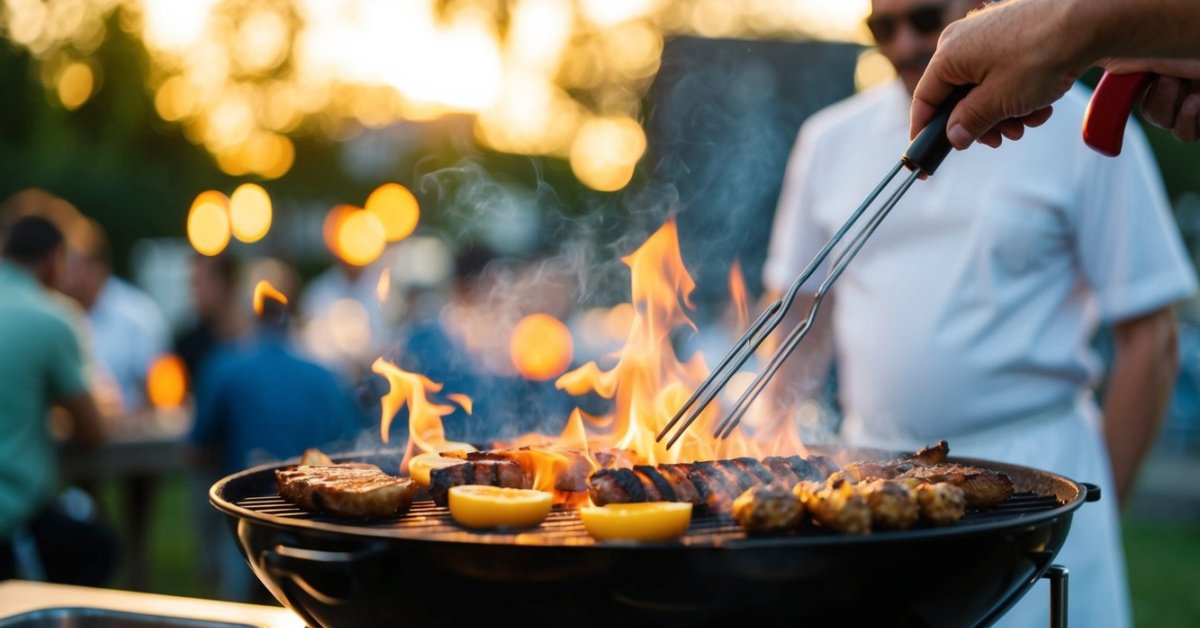I love the rich, smoky flavors that wood can bring to a perfectly smoked dish. But with so many types of wood available choosing the best one can feel overwhelming.

Understanding the nuances of different woods is key to elevating your BBQ game. Whether you’re after a subtle hint or a bold taste the right wood makes all the difference.
Let me guide you through the process of selecting the perfect wood for smoking so you can create mouthwatering meals every time.
Understanding Different Wood Types
Selecting the right wood type is crucial for achieving the desired flavor in your smoked dishes. I categorize wood types into hardwoods, softwoods, and fruitwoods to guide your choices.
Hardwood vs. Softwood
Hardwoods originate from deciduous trees and burn hotter and longer, producing a steady smoke ideal for smoking meats. Softwoods, derived from coniferous trees, contain higher resin levels that can create unpleasant flavors and excessive smoke. I recommend using hardwoods like oak or hickory for a cleaner, more consistent smoke.
Fruitwoods vs. Hardwood
Fruitwoods, such as apple and cherry, offer a sweeter, milder flavor compared to traditional hardwoods. They enhance poultry, pork, and fish without overpowering the natural flavors. In contrast, hardwoods like mesquite provide a stronger, more robust smoke, suitable for beef and game meats. I mix fruitwoods with hardwoods to balance intensity and complexity in the smoked flavor.
Factors to Consider
When choosing wood for smoking, I keep several factors in mind to ensure the best flavor and practicality for my BBQ.
Flavor Profiles
Different wood types impart distinct flavors to your meats.
- Hardwoods: Provide robust, smoky tastes. For example, oak delivers a strong, versatile flavor suitable for beef and pork.
- Fruitwoods: Offer sweet, mild flavors. Apple wood introduces subtle sweetness, enhancing poultry and pork dishes.
- Mesquite: Delivers intense, earthy flavors best suited for red meats like beef brisket.
- Hickory: Adds a hearty, bacon-like flavor, ideal for ribs and pork shoulder.
Availability and Cost
The availability and cost of wood affect my smoking choices.
- Common Woods: Oak and hickory are widely available and cost-effective, making them popular choices.
- Specialty Woods: Fruitwoods like apple and cherry may be pricier and harder to find in some regions.
- Regional Availability: Certain woods thrive in specific areas, influencing their local availability and price.
- Bulk Purchasing: Buying wood in bulk reduces the cost per unit, benefiting frequent smokers.
Popular Woods for Smoking
Choosing the right wood enhances the flavor of your smoked dishes. Here are some popular options:
Hickory
Hickory offers a strong, robust flavor ideal for pork and beef. It burns steadily, producing ample smoke that infuses meats with a classic BBQ taste. Common uses include ribs, bacon, and brisket.
Mesquite
Mesquite delivers an intense, earthy flavor best suited for red meats like beef and game. It burns quickly and hot, making it perfect for shorter smoking sessions. Use mesquite for steaks, burgers, and sausages to achieve a bold taste.
Apple
Apple wood provides a sweet, mild flavor that complements poultry, pork, and fish. It burns at a moderate temperature, generating a delicate smoke that enhances without overpowering. Ideal dishes include chicken breasts, pork chops, and salmon.
Cherry
Cherry wood imparts a slightly sweet and fruity flavor, perfect for a variety of meats. It burns gently, producing a subtle smoke that adds depth to your dishes. Use cherry for turkey, ham, and pork tenderloin to achieve a balanced flavor profile.
Preparing Wood for Smoking
Properly preparing your wood ensures consistent smoke and optimal flavor.
Proper Seasoning
Seasoned wood burns efficiently and produces clean smoke. I let my wood dry for at least six months, reducing moisture content below 20%. Store wood in a well-ventilated area, off the ground, and covered to prevent rain but allow airflow. Avoid green or freshly cut wood, as high moisture can lead to excessive smoke and bitter flavors.
Size and Cuts
Choosing the right size and cuts affects burn rate and smoke production. I use wood chunks sized 4-6 inches for long smokes, providing steady heat and consistent smoke. For quicker sessions, I opt for smaller chips, around 1-2 inches, which ignite faster and burn out sooner. Splitting logs into smaller pieces increases surface area, enhancing smoke generation. Maintain uniform sizes to ensure even burning and avoid sudden flare-ups.
Conclusion
Choosing the right wood can truly transform your smoking experience. I love experimenting with different wood types to find the perfect flavor for each dish. Whether you prefer the boldness of hickory or the sweetness of fruitwoods, there’s a wood out there to match your taste. Remember to consider factors like availability and cost to make the best choice for your setup. Happy smoking and enjoy those delicious meals!













